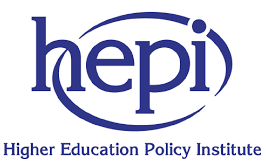As the panic about artificial intelligence’s (AI) capability to bring down democratic governments, usurp all information-related jobs and ultimately cause human extinction calms down, most large organisations have devised at least their initial response to the deployment of generative AI. Some, including major law firms, have banned their use as a research tool; others are building walled-garden versions which draw on ‘approved’ data and do not feed into publicly-available AI platforms, protecting their commercial interests. There are also ongoing high-profile court cases linked to AI platforms, such as the one launched by the New York Times against OpenAI and Microsoft for allegedly breaching copyright by using New York Times content to train the AI systems. Yet many more are happily embracing the tools to see how they can improve productivity and creativity, and achieve business goals.
In higher education, the birthplace of artificial intelligence in all its forms stretching back many decades, universities and colleges have quickly devised policies and approaches for the use of generative AI tools by students for their studies, and in particular for producing assessed work. In a recent Higher Education Policy Institute (HEPI) report based on a survey of over 1,200 undergraduates, 63% felt that their universities had a clear policy on student use of AI.
This was the topic of a recent HEPI roundtable gathering of UK pro vice-chancellors and technology learning experts, co-hosted with learning technology company Chegg. The first speaker quipped that when a personal computer arrived in the school staffroom where he was a teacher in the early 1980s, he and his colleagues thought it would be no use at all. We have all become used to new hardware and software arriving over the years and it quickly becoming an integral part of our personal and professional lives. However, there was a consensus at the discussion that new tools like generative AI should not be ‘plonked’ in the proverbial staffroom. Instead, the companies that produce them should engage with institutions and students for the best effect.

